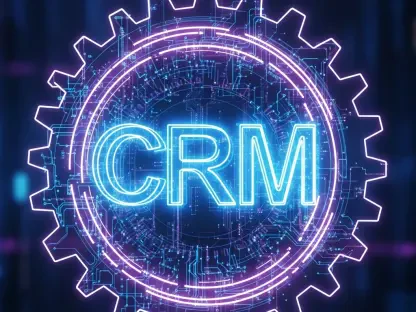Imagine a website that consistently languishes on the second or third page of search results, missing out on valuable traffic despite having high-quality content, a scenario all too common for many businesses and content creators struggling to crack the code of search engine visibility. On-page SEO, the art of fine-tuning individual web pages to rank higher, offers a solution to this challenge. This review delves into the core components of on-page optimization and evaluates three free browser extensions designed to streamline the process for webmasters and marketers.
Understanding On-Page SEO
At its core, on-page SEO involves optimizing specific elements of a webpage to improve its position in search engine rankings and attract relevant traffic. This practice focuses on aspects directly within a site owner’s control, such as content structure and metadata. By enhancing these elements, websites can better communicate their relevance to search engines while providing a seamless experience for users.
The significance of on-page SEO extends beyond mere rankings; it plays a vital role in the broader digital marketing ecosystem. It ensures that pages are easily crawlable by search engine bots, which is essential for indexing. Moreover, well-optimized pages contribute to user satisfaction by delivering clear, accessible, and engaging content, ultimately driving organic growth.
Key Components of On-Page Optimization
Title Tags
Title tags serve as the primary signal of a page’s content and intent to search engines, acting as a concise summary displayed in search results. Their strategic crafting can significantly influence ranking diversity, especially when they incorporate targeted keywords. Keeping titles within an optimal length—typically under 60 characters—ensures they display fully in search snippets, maximizing impact.
Best practices for title tags emphasize clarity and relevance over keyword stuffing. A compelling title not only aids search engines but also entices users to click through by accurately reflecting the page’s purpose. This dual functionality underscores their importance as a foundational element of optimization.
Meta Tags
Meta tags, including meta descriptions and robots meta tags, support on-page SEO by shaping how a page appears in search results and guiding bot behavior. Meta descriptions, while not a direct ranking factor, influence click-through rates by providing a brief preview of content. Crafting engaging summaries within 160 characters can make a notable difference in user engagement.
Robots meta tags, on the other hand, direct search engines on whether to index a page or follow its links, offering control over visibility. Their proper implementation ensures that sensitive or irrelevant pages remain hidden from search results. Together, these elements enhance a site’s overall discoverability and user appeal.
HTML Headings
Headings, ranging from # to H6, structure content in a way that benefits both users and search engines by creating a clear hierarchy. An # tag typically defines the main topic, while subsequent headings break down subtopics, improving readability. This organization helps visitors navigate complex information effortlessly.
From an SEO perspective, headings provide opportunities to include relevant keywords, signaling content importance to search algorithms. Properly nested headings also assist in content parsing, ensuring that key themes are understood. This dual role makes them indispensable for effective communication and optimization.
Links (Internal and External)
Links play a pivotal role in establishing a website’s architecture and authority through internal and external connections. Internal links connect pages within the same domain, enhancing site structure and guiding search bots through important content. This connectivity improves crawlability and distributes page authority effectively.
External links to reputable sources signal credibility, particularly in niches like finance or health where trust is paramount. They demonstrate a commitment to providing valuable resources, which search engines often reward. Balancing both types of links fosters a robust foundation for visibility and reliability.
Images
Images enrich user experience by adding visual appeal and context, while also contributing to visibility in image search results. Optimized images with descriptive file names and compressed formats ensure faster loading times, a critical ranking factor. This technical aspect directly impacts page performance and user retention.
Alt tags further enhance images by providing textual descriptions for accessibility and search engine interpretation. They enable visually impaired users to understand visual content via screen readers while offering additional keyword opportunities. Prioritizing these elements ensures images serve both aesthetic and functional purposes.
Structured Data
Structured data, often implemented via Schema.org markup, helps search engines and AI platforms grasp the context of content on a deeper level. By categorizing information—such as events, products, or reviews—it enables enhanced search features like rich snippets. This can significantly boost click-through rates in competitive spaces.
The adoption of structured data also prepares websites for emerging technologies like voice search and generative AI responses. Its ability to clarify intent and relationships within content makes it a forward-thinking strategy. As search evolves, this element becomes increasingly vital for maintaining relevance.
Current Trends Shaping On-Page SEO
Recent developments in on-page SEO highlight a shift toward balancing technical precision with user-focused design. Accessibility features, such as keyboard navigation and alt text, are gaining prominence as search engines prioritize inclusive experiences. Engagement metrics, like time on page, also influence rankings, pushing marketers to create compelling content.
The rise of AI and generative search platforms is reshaping optimization strategies as well. These technologies demand content that answers queries directly and contextually, often favoring structured data and concise information. Adapting to these trends ensures websites remain competitive in an ever-changing digital landscape.
Practical Uses Across Industries
On-page SEO delivers tangible benefits across various sectors, notably in e-commerce where optimized product pages drive conversions through targeted keywords and images. Retailers often see increased traffic by refining title tags and meta descriptions to match shopper intent. Such precision turns casual browsers into buyers.
Blogging platforms and local businesses also leverage these techniques effectively. Bloggers use headings and internal links to retain readers across related posts, while local businesses employ structured data for map listings and reviews. These tailored applications demonstrate the versatility of on-page strategies in meeting diverse goals.
Obstacles in Implementation
Despite its benefits, on-page SEO presents challenges such as staying abreast of frequent algorithm updates from search engines. Adapting to these changes requires constant vigilance and flexibility, often straining resources for smaller teams. This dynamic environment can hinder consistent performance if not addressed proactively.
Additional hurdles include ensuring mobile-friendliness across devices and managing optimization for large-scale websites with thousands of pages. Automation tools and educational resources are increasingly utilized to tackle these issues, offering scalable solutions. Overcoming such barriers remains essential for sustained success in search visibility.
Evaluation of Free On-Page SEO Extensions
Devaka Tools
Devaka Tools stands out for its ability to spotlight keywords and uncover hidden text, providing deeper insights during SEO audits. This browser extension simplifies the identification of optimization gaps on a page. Its focus on granular details proves valuable for meticulous analysis.
The interface of Devaka Tools is intuitive, catering to users who prioritize quick assessments over extensive features. While not overloaded with extras, it delivers actionable data efficiently. This makes it a practical choice for those seeking straightforward diagnostics without complexity.
Site Inspector
Site Inspector offers a unique persistent sidebar that displays analysis data without interrupting workflow, enhancing usability. Its automatic data loading feature ensures real-time updates as users navigate pages. This seamless integration appeals to professionals needing instant feedback during reviews.
The tool excels in providing a continuous overview of on-page elements, reducing the need for manual refreshes. Its design prioritizes accessibility for ongoing monitoring, making it ideal for dynamic projects. Such functionality supports efficient optimization without disrupting productivity.
SEO Meta in 1 Click
SEO Meta in 1 Click distinguishes itself with a comprehensive suite of features, including word count summaries and page previews alongside exportable content copies. This extension covers a wide array of on-page factors in a single view. Its all-in-one approach caters to users desiring thorough insights.
Beyond basic analysis, the tool facilitates detailed reporting through export options, aiding in documentation and collaboration. Its versatility addresses multiple needs, from quick checks to in-depth evaluations. This breadth of capability positions it as a robust ally for diverse optimization tasks.
Tool Comparison and Insights
A comparative look at Devaka Tools, Site Inspector, and SEO Meta in 1 Click reveals that all three extensions address the six core SEO elements—title tags, meta tags, headings, links, images, and structured data—while supporting Excel exports for data management. Their shared coverage ensures broad applicability for most optimization needs. However, distinct strengths set them apart in user experience.
Devaka Tools shines with niche features like hidden text detection, Site Inspector prioritizes real-time analysis through its sidebar, and SEO Meta in 1 Click offers a holistic view with added utilities like page previews. These differences allow users to select tools based on specific workflows, whether focusing on depth, immediacy, or comprehensiveness. Collectively, they provide flexible solutions for varied preferences.
What Lies Ahead for SEO Utilities
Looking toward the future, on-page SEO tools are likely to integrate AI-driven insights for predictive optimization, adapting to user behavior and search trends. Such advancements could automate routine tasks like keyword placement or structured data suggestions. This evolution promises to simplify complex processes over the coming years.
Evolving search algorithms may also push tools to become more adaptive, focusing on intent-based analysis rather than static rules. From 2025 onward, expect innovations that prioritize personalization in audits, tailoring recommendations to specific industries or audiences. These developments could redefine how optimization is approached strategically.
Final Thoughts
Reflecting on this exploration, the evaluation of on-page SEO and associated tools underscored their critical role in digital visibility. The detailed breakdown of elements like title tags and structured data illuminated their impact on search performance. Testing three free extensions revealed their unique contributions to efficient audits.
Moving forward, adopting a hybrid approach that combines strategic optimization with these accessible tools proved effective for maintaining competitiveness. Experimenting with different extensions based on project needs emerged as a practical next step. Additionally, staying informed about AI advancements and algorithm shifts offered a proactive path to future-proofing SEO efforts.








